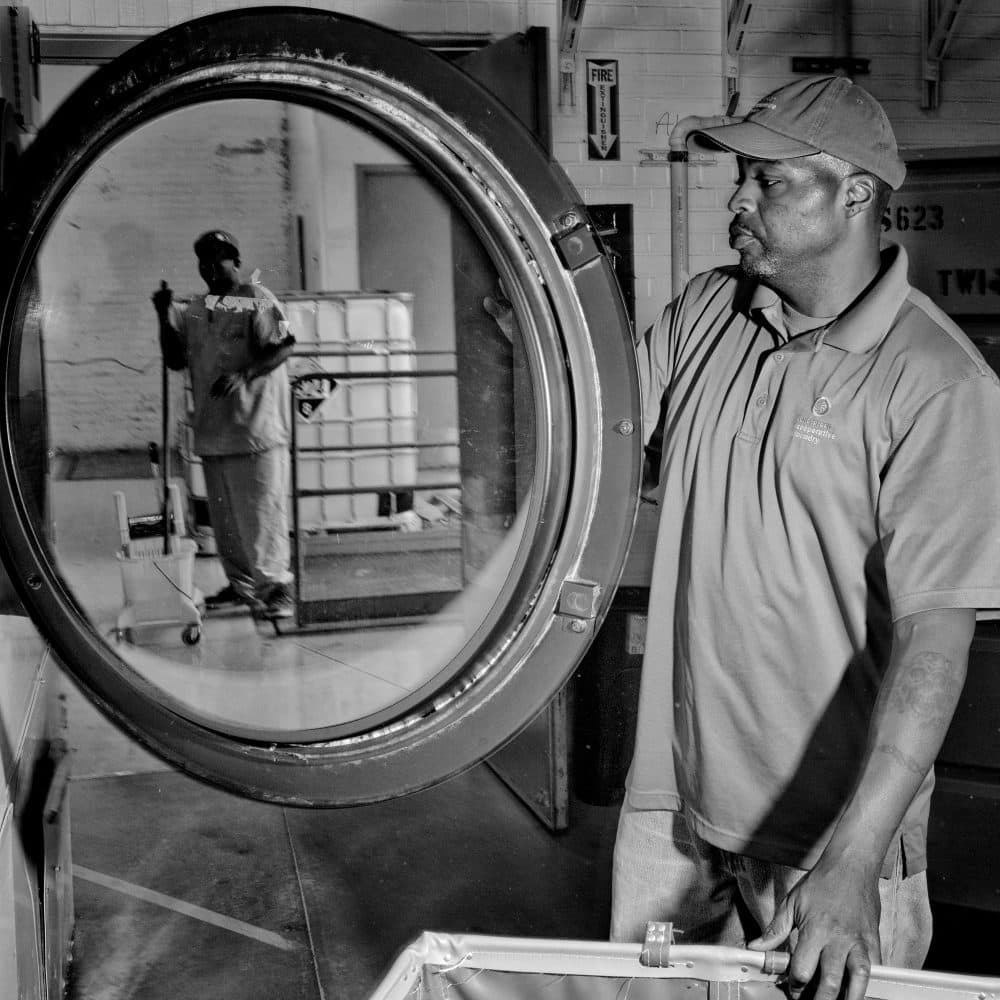Advertisement
What Two Journalists Learned Tracing The Lives Of America's Working Poor
Resume
Seventy-five years ago, writer James Agee and photographer Walker Evans documented the lives of poor, rural Americans in the classic book "Let Us Now Praise Famous Men."
Thirty years later, journalists Dale Maharidge (@dalemaharidge) and Michael Williamson revisited that story and produced their own book, "And Their Children After Them," which won a Pulitzer Prize for nonfiction in 1990.
Maharidge and photographer Matt Black took another look at America's working poor for a new article in Smithsonian Magazine. Here & Now's Peter O'Dowd talks with Maharidge about the story.
Interview Highlights
On James Agee's 1941 book "Let Us Now Praise Famous Men"
"James Agee, a writer for Fortune magazine, and a photographer, Walker Evans, went to Alabama to document what then were the poorest working people in America. It was an assignment for the magazine, and they spent about a month and a half down there with three sharecropping families — extremely destitute, they wore raggy clothing, picked cotton by hand, plowed with mules. He came back to write his story for Fortune, the magazine rejected it, and so like many writers do, he said, 'I'm going to do a book,' and he did this book, 'Let Us Now Praise Famous Men,' which came out in 1941."
On one farm worker he met in "The Scissors" in California's Central Valley
"In Spanish, it's called la tijera, and when she told me it was 'The Scissors' — it's two roads that come together at a sharp angle, and she's right between the blades. She was gonna have a job at a watermelon packing plant for $10-and-something an hour. They were three months behind on their rent, they lived in a horrible, horrible little house, very, very decrepit place. And they're undocumented. And so her chance of getting a real, good job is pretty slim to none. And these are the people who pick our food, process our food... I'm not a stranger to the Central Valley. I reported in Sacramento for many years, and I did a lot of farmworker stories. And it's always amazed me how the people who provide our food are sometimes the most undernourished and most desperate."
"I think the myth is, 'poor people are lazy, they're stupid,' no, no, it's quite the opposite — they're very smart with money, the ones I interviewed, and they're very astute about how to survive in America in this current economy."
Dale Maharidge
On how he approached reporting the story
"You can use what they call 'poverty porn.' I could've done this piece and just said, 'Wow, here's a bunch of poor people,' and just presented them. And it's not really that good. I wanted to take it another step with this project, when I got the assignment from Smithsonian. I wanted to look at some of the things that are being done, very innovative, on the ground right now to help these people, things that we desperately need right now in this country."
On the job creation models he reported on
"The main one was in Cleveland, it's the Cleveland model, it's called the Evergreen [Cooperatives]. It was a private foundation that funded this job creation program. It's three companies — there's a laundromat, there's a greenhouse and there's a construction company. There's about 125 people working there now, and I think of the things we could do like this program, where they get paid a very good wage, they're co-owners of the company — it's a cooperative model — and they can even buy houses through the company for like $20-some-thousand dollars each, and pay them off in five years. The workers are treated extremely well. And now that it's up and running, it's self sufficient, there's no more public monies going into it. They're gonna pay bonuses to the workers for the second time this year."
On asking people he met if they "feel poor"
"The first person I asked was Simón Salazar, he works in a raisin packing plant in the Central Valley. And at first when I met him, he was suspicious of me, he was like, 'I don't think you struggle like us.' It wasn't a mean question — it was more of an honest observation. So I wound up volunteering, helping them build houses for three days, and at one point I asked Simón, I said, 'Do you consider yourself poor,' and he rubbed his beard, and he pointed to a van, and he said, 'See that van? It's used, I saved two years to buy it, I paid cash,' he said, 'I have no debt.' He says, 'You look at people who look like they're rich, how much debt do they have? I have no debt.' He lives within his means. I thought that was a fascinating answer, and so I decided to ask everybody else the same question on my travels."
On what Salazar's answer says about the state of poverty in the U.S.
"It says something about money. A lot of the people I interviewed across the country, these are people who do not have credit cards. Many of them don't even have bank accounts. But they do not use credit, because they know they can't get into debt. So they're very frugal, and creative in how they survive. So I think the myth is, 'poor people are lazy, they're stupid,' no, no, it's quite the opposite — they're very smart with money, the ones I interviewed, and they're very astute about how to survive in America in this current economy."
This segment aired on January 2, 2017.